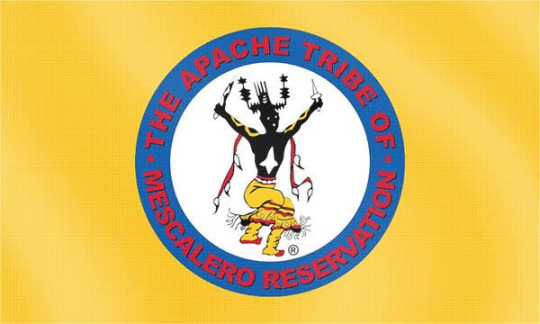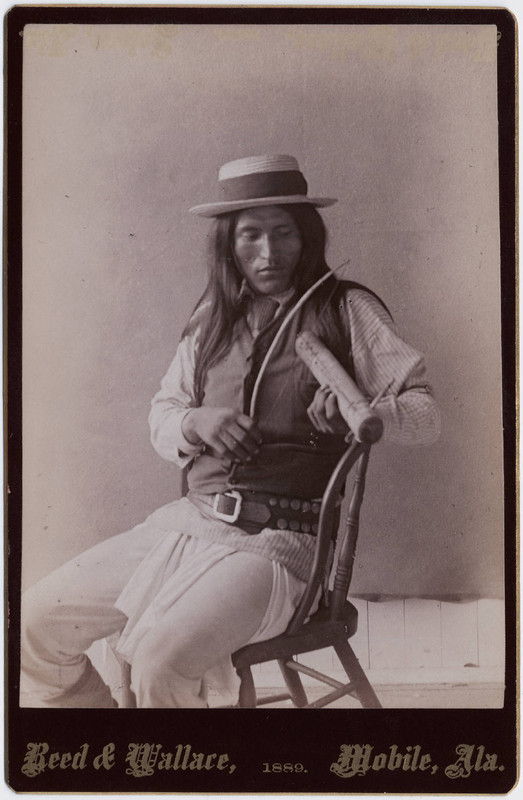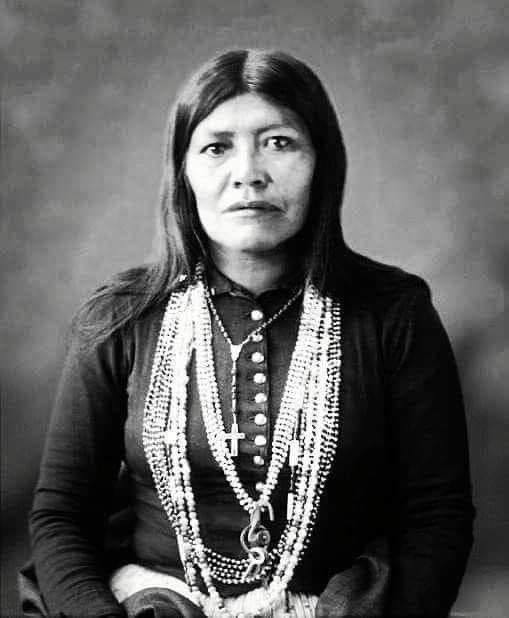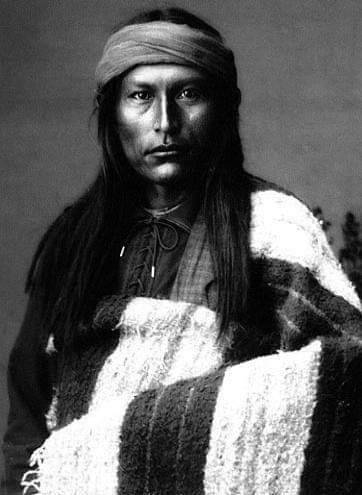#Mescalero Apache
Explore tagged Tumblr posts
Text






Ruidoso and the surrounding area are engulfed in flames, including Mescalero Apache tribal land. Mass evacuation are underway and people are losing everything.
I've got a friend with Community Power New Mexico who is taking donations (we're giving a bed) and I'm wondering if any of y'all would be able to help?
I don't have an official donation link yet, but anything donated to me for the next couple of days, or until I can get an official link, will be going to them.
Link in pinned post. If anyone wants to buy some comics, 50% of any sale will also go to them.



#south fork fire#salt fire#ruidoso#ruidoso nm#ruidoso new mexico#ruidoso fire#Mescalero#Mescalero Apache#new Mexico#forest fire#emergency#emergency donations#shit looks like hell
169 notes
·
View notes
Text

Apache Tribe
Mescalero reservation
#indigenous people day#fuck Columbus Day#fuck Columbus#mescalero#mescalero Apache#mescalero reservation
14 notes
·
View notes
Text

Thinking about her the other day
#navii art#my art#sth fanart#archie sonic#lupe the wolf#satam sonic#for my design i want to explore first how i would draw her as seen in the comics/show#then how i can incorporate more representative elements of her inspiration- buckskin textiles and patterns from her armor in the comics#then finally what i think would be 'easier' to draw in a comic setting- simpler design and shapes that takes less time and fits modern style#i primarily used mescalero apache peoples as reference- esp their buckskin textiles but also included patterns from her armor in the comics#she and the wolf pack were more of a monolithic representation of indigenous peoples in the americas then representing a specific population#though her armor always threw me off- maybe a mix between greek and mesoamerican? made me think too much of an amazonian warrior#and away with the leotards
22 notes
·
View notes
Text

Yanozha; Chiricahua Apache
~
Taken in Florida, circa 1885
#trueamericans
#Yanozha#florida#chiricahua#apache#warmspringsapache#battleofapachepass#apachewars#1885#1880s#mescalero#tontoapache#jicarilla#plainsapache#mangascoloradas#cochise#taza#naiche#victorio#lozen#nana#loco#chato#geronimo#juh#dutchy#apachekid#bonito#baishan#sanjuan#nativeamericans
8 notes
·
View notes
Text
Dahteste was a famous Apache woman warrior, and it was widely known that she could out-ride, out-shoot, out-hunt, out-run, and out-fight her peers, both male and female. She took part in battles and raiding parties alongside her husband and best friend Lozen, another Apache woman warrior. She and Lozen were good friends with Geronimo, and he chose her to be his official translator in his talks with the US Cavalry. After negotiating treaties with the US government, she was imprisoned in Alabama and Florida, and later, Fort Sill, surviving both tuberculosis and pneumonia. 19 years later, she was released and lived out the rest of her life on the Mescalero Apache reservation.

252 notes
·
View notes
Text
#religion#christianity#catholicism#native american#apache#new mexico#religious trauma#oppression#united states#article#divinum-pacis
64 notes
·
View notes
Photo

Jicarilla-Apache Creation Story & Origin of the Animals
The Jicarilla-Apache Creation Story and Origin of the Animals are two origin myths of the Jicarilla-Apache nation of modern-day New Mexico. The Apache people as a whole have many different creation tales, as do the Jicarilla, but all follow the same basic model of a supernatural entity creating the world from nothing.
Chiricahua-Apache Medicine Man in Traditional Wickiup with Family, 1883
Denver Public Library Special Collections (Public Domain)
The Jicarilla's Origin of the Animals shares similarities with the same sort of legend from many other Native peoples of North America. There are several origin myths that feature the detail of the first animals emerging from under the ground – just as there are many creation stories, involving humans coming up from below the earth, that follow that same paradigm – and this detail is so popular because it reminded the people of their ancient connection to the land they lived on. Their ancestors, and those of all the animals, had once come up from beneath the ground, and so the earth was viewed as the Great Mother and should be respected and cared for accordingly.
Apache Nation & Importance of Stories
The Apache people call themselves Dini (Dine), Tinde, Tinneh ("the people"), and the different bands are related by their shared Athapascan language. They are thought to have been given the name Apache ("enemy") by the Zuni nation, though this claim has been challenged. They are linguistically related to the Athabaskan-speaking Navajo, who also refer to themselves as Dine (pronounced DEE-Nay). In time, the Apache came to apply that name to themselves and inhabited the region of the Southwest and Southern Plains of modern-day USA. There are six bands which comprise the Apache nation and subbands within those:
Chiricahua
Jicarilla
Lipan
Mescalero
Plains Apache
Western Apache
Among the best-known Apache figures from Euro-American history are the resistance leaders Mangas Coloradas (l. c. 1793-1863), Cochise (l. c. 1805-1874), Victorio (l. c. 1825-1880), Victorio's sister, Lozen (l. c. 1840-1889), and Geronimo (l. 1829-1909).
Portrait of a Jicarilla-Apache Man
Edward S. Curtis (Public Domain)
The Apache first came into conflict with Europeans when the Spanish invaded their lands in the 1500s and, later, mounted resistance against the Euro-Americans before, and after, they seized control of Mexican lands in 1848. By 1900, the Apache had been forcibly relocated from their ancestral lands and confined to reservations by the US government. They have kept their culture alive through their language, practicing their religion, and observing traditional customs, including storytelling. The following two tales are among the best-known, relating the creation of the world and the establishment of the relationship between the people and animals.
Continue reading...
27 notes
·
View notes
Text

this is the bitch responsible
also wdym germans are obsessed w native americans. I thought they were nice to me cuz they felt bad. I didn’t think I was a weird little fetish doll thing
#he went and wrote his stupid books about “cowboys and indians”#and now every bitch in germany thinks they're a mescalero apache
30 notes
·
View notes
Text
Descriptions of female hunting in several North American Indian societies have been provided by Regina Flannery, Ruth Landes, and Louise Spindler. In the cases cited by them, certain females adopted "masculine styles" that they learned from men and performed out of necessity. When she lived among the Eastern Cree of the James Bay region of Canada during the summers of 1933 and 1935, Regina Flannery came to know several old women reputed to have been excellent hunters in the old days. They hunted either because of the illness or death of their male relatives or, as the women said but no man ever admitted, because of "just plain incompetence of the men at hunting." While living among the Mescalero Apache in the mountains of southeastern New Mexico, Flannery was told by a "shriveled-up, decrepit old woman" that in the past "young married women might go hunting with their husbands, not merely to accompany them, but actually to take part in the chase." Flannery found it hard to believe that such a woman "was once active and skilled enough to rope a buffalo, wind the rope around a tree, and kill the animal with an axe." However, she received corroborating information from others that in the past this was not an uncommon feat for women who, if they needed food, would kill whatever animals they came upon.
-Peggy Reeves Sanday, Female Power and Male Dominance: On the Origins of Sexual Inequality
36 notes
·
View notes
Text

LETTERS FROM AN AMERICAN
November 29, 2024
Heather Cox Richardson
Nov 30, 2024
In 2008, Congress passed and President George W. Bush signed into law an act making the day after Thanksgiving National Native American Heritage Day.
About a month ago, on Friday, October 25, President Joe Biden became the first president to visit Indian Country in ten years when he traveled to the Gila River Indian Community in Maricopa County, Arizona, near Phoenix. Secretary of the Interior Deb Haaland traveled with him. The trip was designed to highlight the investments the Biden-Harris administration has made in Tribal Nations.
At a press gaggle on Air Force One on the way to Arizona, White House press secretary Karine Jean-Pierre noted that under Biden, Tribal Nations have seen the largest direct federal investment in history: $32 billion from the American Rescue Plan and $13 billion through the Bipartisan Infrastructure Law to build roads and bridges, bring clean water and sanitation, and build high-speed Internet in Tribal communities.
Jean-Pierre added that First Lady Jill Biden has also championed Native communities, visiting them ten times to highlight investments in youth mental health, the revitalization of Native languages, and to improve access to cancer screening and cancer care in Native communities.
Secretary Haaland, herself a member of the Pueblo of Laguna, agreed that the Biden-Harris administration has brought “transformational change” to Native communities: “electricity on the Hopi Reservation in Arizona for homes that have never had electricity; protecting cultural resources, like salmon, which Pacific Northwest Tribes have depended on for thousands of years; new transportation infrastructure for the Mescalero Apache Nation in New Mexico that will provide a safer travel route and boost their economic development, their local economy; addressing toxic legacy pollution and abandoned oil and gas infrastructure that pollutes our air and water for the Osage Nation in Oklahoma; providing clean drinking water for Fort Peck in Montana.”
“Tribal leaders are experiencing a new era,” Haaland added. “They’re at the table. They’re being consulted.”
When Biden spoke at the Gila Crossing Community School, he said he was there “to right a wrong, to chart a new path toward a better future for us all.” As president of the United States, Biden formally apologized to the Native peoples—Native Americans, Native Hawaiians, Native Alaskans—for the U.S. government policy that forced Native children into federal Indian boarding schools.
The apology comes after the release of an Interior Department study, The Federal Boarding School Initiative, that Secretary Haaland directed the department to undertake in 2021. According to Assistant Secretary of the Interior Bryan Newland, a citizen and former president of the Bay Mills Indian Community (Ojibwe), the initiative was “a comprehensive effort to recognize the troubled legacy of Federal Indian boarding school policies with the goal of addressing their intergenerational impact and to shed light on the traumas of the past.”
The initiative set out to identify federal Indian boarding schools and sites, to identify the children who attended those schools and to identify their Tribal identities, to find marked and unmarked burial sites of the remains of Indian children near school facilities, and to incorporate the viewpoints of those who attended federal Indian boarding schools and their descendants into the story of those schools.
The report looked at the Indian education system from 1819 to 1969 as a whole, bringing together federal funding for religious schools in the early 1800s with later explicitly federal schools and their public school successors during and after the 1930s. But historians generally focus on the period from 1879 to the 1930s as the boarding school era.
In 1879, the government opened the Carlisle Indian Industrial School, a boarding school for American Indian children in Carlisle, Pennsylvania, explicitly designed to separate children from their families and their culture and to train them for menial jobs.
The boarding school era was the brainchild of Army officer Richard Henry Pratt, a Civil War veteran who, in the years after the war, commanded the 10th United States Cavalry, a Black regiment stationed in the American West whose members Indigenous Americans nicknamed the “Buffalo Soldiers.” Pratt fought in the campaigns on the Plains from 1868 through 1875, when he was assigned to oversee 72 Cheyenne, Kiowa, Comanche, Arapaho, and Caddo prisoners of war at Fort Marion in St. Augustine, Florida (now known as the Castillo de San Marcos National Monument).
Many Indigenous prisoners at Fort Marion, taken from the dry Plains to the hot and humid coast of Florida where they were imprisoned in a cramped stone fort, quickly sickened and died. Pratt worked to upgrade conditions and to assimilate prisoners into U.S. systems by teaching them English, U.S. culture, Christianity, and how the American economy worked. He cut their hair, dressed them in military-type uniforms, and urged them to make art for sale to local tourists—it’s from here we get the world-famous collection of ledger art by the artists of Fort Marion—but focused on turning the former warriors and their families into menial workers.
After the Battle of the Little Bighorn in 1876 and the subsequent pursuit and surrender of leading Lakota bands throughout that year and the next, leading to the murder of Crazy Horse in 1877, popular opinion ran heavily toward simply corralling Indigenous Americans on reservations and waiting either for their assimilation or extermination. At the same time, with what seemed to be the end of the most serious of the Plains Wars, Army officers like Pratt had reason to worry that the downsizing of the U.S. Army would mean the end of their careers.
Indigenous survivors of Fort Marion returned home to see that the American government had no real plans for a thriving American Indian populace. There was little infrastructure to link them to the rest of the country to sell their art, and Indian agents rejected tribal members for jobs in favor of white cronies.
But Pratt considered his experiment at Fort Marion a great success, and he came to believe he could make his system work even more thoroughly by using a loophole in the treaties between Plains Tribes and the U.S. government to force Indigenous Americans to assimilate as children. He planned, he said, to “Kill the Indian and save the man.”
Treaties between Plains Indian Tribes and the government required the U.S. government to educate American Indian children—something their parents cared deeply about—but the treaties didn’t actually specify where the schools would be. So Pratt convinced the U.S. Army and officials at the Interior Department to give him the use of the Carlisle Barracks to open an industrial school, designed to teach American Indian children the skills necessary to be servants and menial workers.
In summer 1879, Pratt traveled to western reservations of the Lakotas and Dakotas, primarily, to gather up 82 children to begin his experiment in annihilating their culture from their minds. He forbade the practice of any aspect of Indigenous culture—language, religion, custom, clothing—and forced children to change their names, use English, practice Christianity, and wear clothing that mirrored that of Euro-American children.
Crowded together, many children died of disease; bereft of their family and culture, many died of heartache. Some found their newfound language and lessons tolerable, others ran away. For the next fifty years, the Carlisle model was the central model of government education for Indigenous children, with tens of thousands of children educated according to its methods.
In the 1920s the Institute for Government Research, later renamed the Brookings Institution, commissioned a study funded by the Rockefeller Institute—to make sure it would not reflect government bias—to investigate conditions among Indigenous Americans.
In 1928 that study, called the Meriam Report, condemned the conditions under which American Indians lived. It also emphasized the “deplorable health conditions” at the boarding schools, condemned the schools’ inappropriate focus on menial skills, and asserted that “[t]he most fundamental need in Indian education is a change in point of view.” In 1934 the Indian Reorganization Act reversed the policy of trying to eradicate Tribal cultures through boarding children away from their families, and introduced the teaching of Indian history and culture in federal schools.
But the boarding schools remain a central part of the experience of American Indians since the establishment of the U.S. government in North America, and the Federal Boarding School Initiative recommended that “[t]he U.S. Government should issue a formal acknowledgment of its role in adopting a national policy of forced assimilation of Indian children, and carrying out this policy through the removal and confinement of Indian children from their families and Indian Tribes and the Native Hawaiian Community and placement in the Federal Indian boarding school system.”
It continued: "The United States should accompany this acknowledgment with a formal apology to the individuals, families, and Indian Tribes that were harmed by U.S. policy."
On October 25, 2024, President Joe Biden delivered that apology.
LETTERS FROM AN AMERICAN
HEATHER COX RICHARDSON
#Heather Cox Richardson#Letters From An American#American History#native Americans#American Indians#Federal Boarding School Initiative#Indian Children#Indian Reorganization Act#American Heritage Day
14 notes
·
View notes
Text

DOMINGO, UN APACHE MESCALERO, POSANDO JUNTO A UNA PIEL DE LEÓN DE MONTAÑA, 1883-1888
Los Mescaleros han sido los vecinos de nuestra región durante muchos siglos. De hecho, acamparon en el área que ahora es el centro de El Paso de manera intermitente desde 1778 hasta 1825, alcanzando un máximo de 800-1,000 hombres, mujeres y niños en 1790-95.
Esta foto de Frank A. Randall es cortesía de Moses on the Mesa.
7 notes
·
View notes
Text

I haven't seen anyone talk about it here, but there's a huge wildfire in Ruidoso, New Mexico, and it's displaced and unhoused a lot of people, including the Mescalero Apache Tribe.
They are asking people to donate to Community Foundation of Southern New Mexico, and the Tribe has set up a GoFundMe.
If you donate at least $10 USD to either of those charities (or another vetted charity) and send me a copy of your receipt (any identifying information removed, of course), I will draw you an icon in the style above. They can be like my pride portraits or like my emoji portraits, too (under the cut below).
I will draw:
fanart AND OCs (with refs) (please include refs for podcast characters)
1 character per icon
humanoid furries (nothing full animal, sorry)
faces only (and maybe an arm/shoulder)
I won't/can't draw:
real people (characters portrayed by actors are okay)
mechs/robots (UNLESS they are very humanoid, i.e. Aradiabot from Homestuck)
animals
incest/pedophilia/anything USFW
anything racist/homophobic/transphobic/ableist/etc
anything with AI generated refs
Just email me at [email protected] with a copy of your receipt and the character you want (refs needed for OCs).
More examples of my work:


















20 notes
·
View notes
Text

Naiche - Chiricahua Apache
Naiche 1856-1919
Naiche, the youngest son of Cochise, was born in 1856. His mother, Dos-teh-seh, was the daughter of Mangas Coloradas. As a young man he took part in raids on white settlers and in 1872 was with his father when he met Brigadier General Oliver Howard. This resulted in the establishment of the Chricahua Reservation in Arizona ... Taza, Cochise's older son, became chief when his father died in 1874. Two years later Taza died and Naiche became the leader of the Chiricahuas Apaches ... In September 1880, Naiche joined Geronimo and Juh in an attempt to lead their people from the San Carlos Reservation into the Sierra Madre. However, in 1883 General George Crook managed to persuade the Apaches to return to Arizona ... Naiche and Geronimo broke out again in May 1885. Once again General Crook was sent after them. Naiche lived in the Sierra Madre until he was caught by Crook in September, 1886. Natchez now joined the all-Indian "I" Company, 12th Infantry at Fort Sill, Oklahoma ... In 1897 Naiche worked as a scout for Captain Hugh Scott and the 7th Cavalry ... After leaving the army he moved to the Mescalero Reservation in New Mexico ...
Naiche died on 16th March, 1919
121 notes
·
View notes
Text

Apache people on horseback
~
Circa 1903
#apache#mescalero#mimbreños#jicarilla#chiricahua#tonto#warmspringsapache#whitemountainapache#sancarlosapache#battleofapachepass#apachewars#baishan#mangascoloradas#cochise#naiche#victorio#lozen#taza#nana#geronimo#juh#loco#sanjuan#dutchy#apachekid#alchesay#chato#perico#chiefchihuahua#nativeamericans
2 notes
·
View notes
Text
The Apache are a group of culturally related Native American tribes in the Southwestern United States, which include the Chiricahua, Jicarilla, Lipan, Mescalero, Mimbreño, Ndendahe (Bedonkohe or Mogollon and Nednhi or Carrizaleño and Janero), Salinero, Plains (Kataka or Semat or "Kiowa-Apache") and Western Apache (Aravaipa, Pinaleño, Coyotero, Tonto). Distant cousins of the Apache are the Navajo, with whom they share the Southern Athabaskan languages. There are Apache communities in Oklahoma and Texas, and reservations in Arizona and New Mexico. Apache people have moved throughout the United States and elsewhere, including urban centers. The Apache Nations are politically autonomous, speak several different languages, and have distinct cultures. Historically, the Apache homelands have consisted of high mountains, sheltered and watered valleys, deep canyons, deserts, and the southern Great Plains, including areas in what is now Eastern Arizona, Northern Mexico (Sonora and Chihuahua) and New Mexico, West Texas, and Southern Colorado. These areas are collectively known as Apacheria. The Apache tribes fought the invading Spanish and Mexican peoples for centuries. The first Apache raids on Sonora appear to have taken place during the late 17th century. In 19th-century confrontations during the American-Indian wars, the U.S. Army found the Apache to be fierce warriors and skillful strategists.

92 notes
·
View notes
Text

An Apache Crown Dancer whirls around the bonfire during a coming-of-age blessing ceremony for two young tribe women in Mescalero, New Mexico, Saturday, July 13, 2024. (AP Photo/Andres Leighton)
24 notes
·
View notes